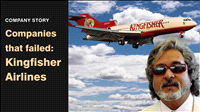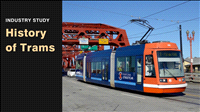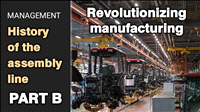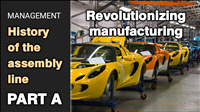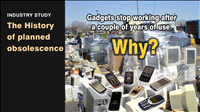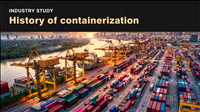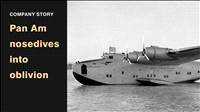History of the assembly line part A | What is an assembly line
By Kiron Kasbekar | 21 Mar 2023
The video I’ve created for you today is about the assembly line, a system that was introduced more than a hundred years ago, and has now become an absolute standard across manufacturing industries all over the world.
I am sure you know what I am talking about even if you have not actually been inside an automobile or an engineering factory and seen how the assembly line works. You must have seen photographs and videos of assembly lines for cars or for other products.
An assembly line is basically a process that splits product manufacturing into a series of steps, with the steps being completed in a pre-defined sequence. Today assembly lines are the near-universally used method of mass production in industries like engineering and automobiles, and many others.
Let me state at the outset that there are industries like chemicals, petrochemicals and petroleum refineries, which do not use assembly lines. That is because they are process industries in which the process is a continuous one, often involving chemical reactions, and there is next to no human involvement in the process.
So, assembly lines are used primarily in industries like engineering, where the processes can be broken down into discrete tasks, each task or set of tasks being usually completed by a single worker before it is passed on to the next worker who takes care of the next set of tasks on the product being manufactured. The tasks can be as small as fixing a screw in a plate or as big and heavy as manipulating a car body suspended by chains and then fixing it on its chassis held at the bottom of the work station.
There are two main reasons why assembly lines came into worldwide use. They reduced labor costs because they could use unskilled workers.
Why? Because it took very little to train a person to do a specific task, compared to training a worker to build an entire car, for example. Pulling down a part and riveting it or soldering it was a simple job for a worker if he didn’t have to do anything else. This worked not just with cars, but with a host of other industries, including radios and television sets, domestic appliances, even furniture.
Before assembly lines began being used, workshops manufacturing metal products were much less organized. They basically had workmen sitting or standing in their places and performing a variety of tasks on the unfinished product, from actually working on the product to walking to the store¬room as and when they needed to fetch parts to add to the unfinished product. They would also work on some components and then when they were finished, carry them to the main product body and fix them to it.
Different workers would take different amounts of time to do the same work. A great deal depended on the skills of workers rather than the ways in which they were organized.
But before I continue, one request.
I hope you’ve seen our earlier videos and liked them. If so, please subscribe to this channel, if you have not done so already. Do also click on the ‘like’ button below. And share this link with your friends.
One other thing I’d like to mention here. And that is Informachine – a business news monitoring system that gets you content from your selection from thousands of business websites we have listed there. It saves you hours of grind and toil. And it’s free of cost! The link is given in the description below.
OK. Back to today’s video. I hope you watch it completely. Now let me get back to it.
Before the 20th century, products used to be made, by and large, by individuals, by hand. A solitary craftsman or a team of craftsmen would use their personal skills to create parts of products. And then put them together.
The craftsman, or the team of craftsmen, would create all the parts of a product. Each of them would use various tools, such as clamps, saws, chisels, awls, hammers, screwdrivers, and drills, to hold, cut, flatten, tighten, and perform other such functions.
Then they would assemble the parts into the final product. Fitting parts into one another would be a trial-and-error process. Measurements were crude, and craftsmen would have to push, pull, turn, or cut, file or sandpaper away unwanted stuff to ensure that parts fit one another.
And then they had a product that could be sold in the market.
As I am sure you can imagine, because they were made manually and with a great deal of cutting and scraping, a set of parts would not be exactly like another sets of parts. The more experienced and skilled the workers the more consistently uniform were the products they made. But they could almost never get the kind of precision-like uniformity in the products we are accustomed to getting today.
Even after some simple machines were invented, it used to be a single worker working on different machines, with different tools and in the different parts of the process by which a product was made.
Working on machines required training and skill, without which parts and products would come out defective. The simpler the tools the greater the skills that were required. When I say ‘simpler’, I mean simpler compared with today’s automatic and semi-automatic machines. Craftsmen had to apprentice with an experienced senior craftsman to learn the skills, and it sometimes took years to be really good at a craft.
Gradually, as workshops expanded in size, the master craftsman, or owner of the workshop, realized that it made sense to have different workmen specializing in different things. That way they could do a better job – and do it faster too.
So, while earlier everybody did everything, bigger workshops, or factories, began to practice division of labor.
Some such division of labor is said to have been practiced in China, where government monopolies made agricultural implements, ceramics, weapons and armor, centuries before Europe took to mass production a little before the Industrial Revolution. But that was a rather primitive kind of division of labor compared to what came later.
Equally interesting, or more interesting, is the case of the Venetian Arsenal in Venice in Italy. Way before the rest of Europe adopted mass production and assembly techniques, way back in the 12th or 13th century, which was centuries before the Industrial Revolution happened in Europe, this organization used processes that resembled production lines.
In the early 16th century the Arsenal was the world’s most powerful and efficient shipbuilding enterprise, supplying major munitions as well as rigging and other nautical supplies to the Venetian navy. It employed around 16,000 people, and produced nearly one ship a day, using standardized parts on an assembly-line basis. The workmen would also fit out, arm, and provision a newly built galley with standardized parts on an assembly-line basis.
The huge and complex Arsenal system moved ships down a canal, and the ships were fitted out by a line of workshops as they passed by.
Imagine an assembly line the size of a major city zone! But shipbuilding was important to Venice. And Venice was the biggest shipbuilding centre in the world in those days.
Although the Arsenal lasted until the early Industrial Revolution, production line methods did not become common even then.
Now, from big ships to small pins.
In his book, The Wealth of Nations, published in 1776, Scottish economist Adam Smith wrote a detailed account of the division of labor in the manufacture of pins. Some recent writers have scoffed at Smith’s comments because Smith did not write from his own experience but from second-hand reports about the production of pins in France.
He wrote: ‘One man draws out the wire, another straights it, a third cuts it, a fourth points it, a fifth grinds it at the top for receiving the head; to make the head requires two or three distinct operations; to put it on is a peculiar business, to whiten the pins is another; it is even a trade by itself to put them into the paper; and the important business of making a pin is, in this manner, divided into about eighteen distinct operations, which, in some manufactories, are all performed by distinct hands, though in others the same man will sometimes perform two or three of them.’
I am not concerned here about whether Smith wrote from his own experience or from hearsay. What is important is how he described the process. And the details may not be important. What is important to note is that assembly lines were based on a kind of division of labor. Different workers worked on different parts of a product, and that process resulting in the final product.
Workers no longer needed to be experts in making an entire product. They just needed the skill to perform a small action, like turning a screw or fitting a nut on a screw or fixing a piston seal.
The past two and a half centuries saw a series of new products being brought to the market. And there were great improvements in the production of many existing products. So, while there were dramatic changes in the production of textiles, firearms, clocks and watches, and horse-drawn carriages, new products such as railway locomotives, sewing machines, and bicycles entered the market.
Dramatic improvements were witnessed in materials handling, machining, and assembly during the 19th century.
Here are just a few examples of those developments:
• The manufacture of the pulley block was fully automated at the Portsmouth Block Mills in the early 19th century.
• Oliver Evans, an American inventor, engineer and businessman, built an automatic flour mill in 1785, and thus began the era of modern bulk material handling and processing. The mill used a leather belt bucket elevator, screw conveyors, canvas belt conveyors, and other mechanical devices to completely automate the process of making flour. Soon the innovation was adopted by other mills, and by breweries.
• Between 1801 and 1803, the Portsmouth Block Mills launched what was possibly the earliest industrial example of a linear and continuous assembly process.
• In the late 18th century Marc Isambard Brunel and his associates designed 22 types of machine tools to make the parts for the rigging blocks used by the Royal Navy. The factory that made these tools remained functional right until the 1960s.
• The Leiston Works in Leiston in England, owned by Richard Garrett & Sons, ran the first flow assembly line for the manufacture of portable steam engines. Fully operational by early 1853, the factory had boilers brought up from a foundry and placed at the start of the line. Then it progressed through the building, stopping at various stages where new parts were added. Lighter parts would be lowered from the upper level over a balcony, where other parts were made, and then fixed onto the machine on the ground level. A complete machine would emerge at the end of the shop.
• The early 19th century saw the development of machine tools such as screw-cutting lathes, metal planers, and milling machines. Those were also days when tool paths began to be controlled via jigs and fixtures, laying the foundation of the modern assembly line by implementing the concept of interchangeable parts.
• Sometime in the last quarter of the 19th century steam-powered conveyor lifts began to be used for loading and unloading ships.
• Around the same time electric-powered conveyor belts began to be used to move cans on a filling line in a canning factory.
Production lines began to be used in the meat packing industry in Chicago around 1867. A pulley system would convey the meat to workers standing at fixed stations, and each worker would complete one task in the process.
Much later, this process inspired Henry Ford to devise an assembly line at the Ford Motor Company. Ford had also been impressed by an automated 40-acre Sears’ mail order handling facility he visited around 1906.
While Henry Ford is credited with first implementing the assembly line for mass production, another auto pioneer, Ransom Eli Olds, after whom the Oldsmobile and REO brands were named, is also mentioned.
Olds is said to have built his first steam car as early as 1887 and his first petrol-driven car in 1896, though he was not the first in either of these ventures. The concept and practice of the modern assembly line is also credited to Olds, who used it to make the Oldsmobile Curved Dash, the first mass-produced car in 1901. He patented the assembly line concept, which was introduced in his Olds Motor Vehicle Company factory in 1901.
There is some amount of confusion about who did it first, Olds, or Ford, and I was unable to find a satisfactory answer through all my search on the subject.
Therefore, I am not going to waste any more time on the debate. So, back to Ford, about whom a lot more is known than is about Olds.
In his autobiography, published in 1922, Henry Ford discusses the benefits of the assembly line.
The great advantages, he says, include the fact that workers do not have to do any heavy lifting. The heavy materials are lifted and placed on the assembly line by cranes. They do not have to stoop or bend over their work and strain their backs. And the great advantage to the company is that workers do not need any special training – the work they do is work that almost anyone can do.
Ford Motor tested various assembly methods to optimize the procedures to mount the Model T car body on the chassis. After much experimenting, the equipment was permanently installed in 1913, using an overhead crane above the assembly line to mount the body.
There was clearly a saving there for the company because unskilled workers cost much less than skilled ones.
Henry Ford now offered a new way of manufacturing a large number of vehicles – the moving assembly line. The assembly line featured a conveyer belt, a device that had been used in other industries, such as slaughterhouses.
Instead of getting workers to move to a series of jobs on the line, the conveyor belt brought the product to the worker, and that resulted in a big improvement in the use of time and resources.
After considerable trial and error, the Ford plant began using the method successfully in 1913 at its Highland Park assembly plant in Michigan.
Vehicles began to be pulled down the line and built step-by-step. The company first used rope to pull the vehicles, but soon adopted a moving chain mechanism. With this, the Model T could be built in just 90 minutes.
Now this video has gone on quite a bit and you may want to have a break before you see the rest of it so I have cut the video here and will show you the remaining part of the story the day after the tomorrow.






